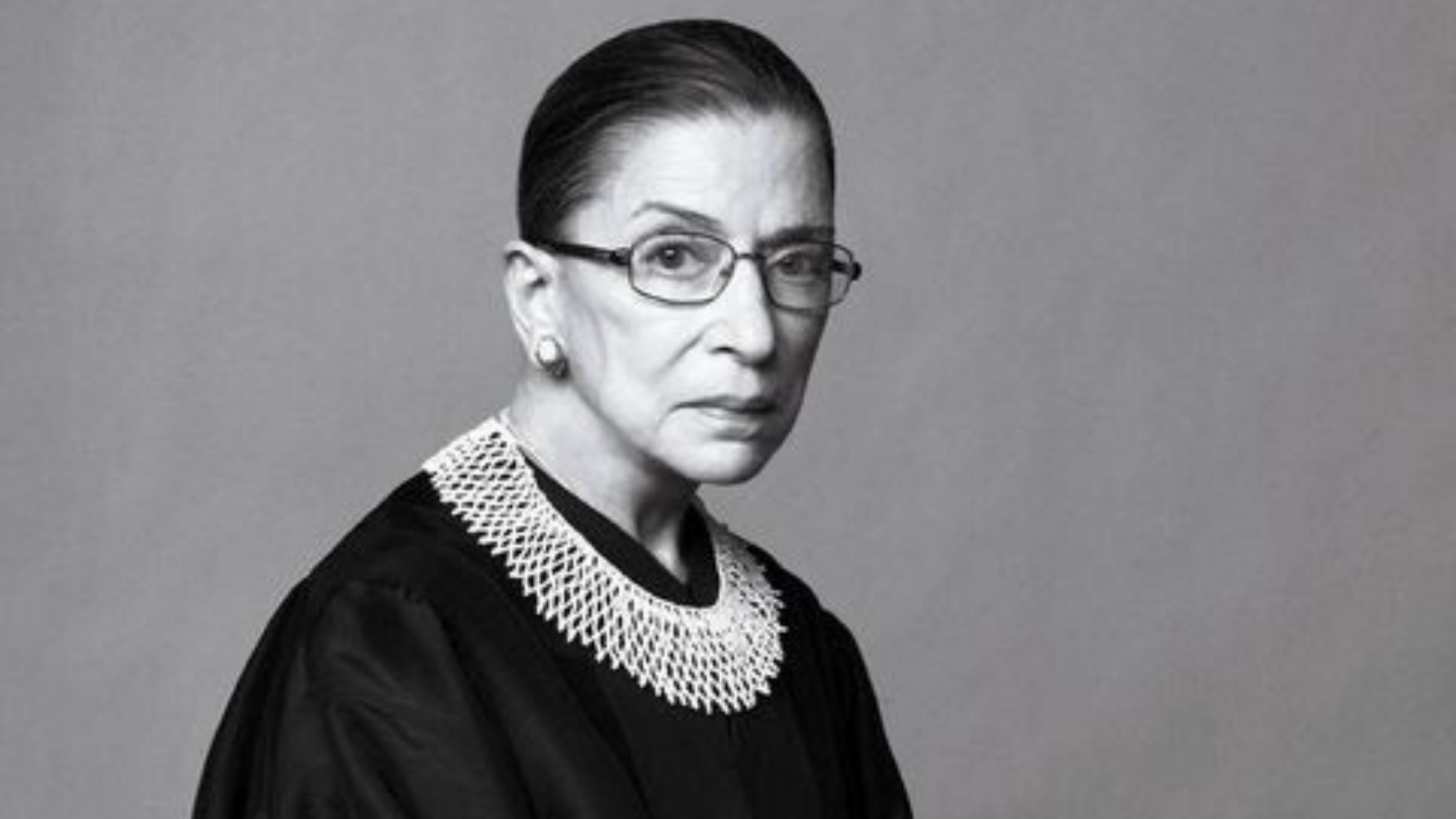By Konstantina Kerpinioti,
Ruth Bader Ginsburg was an American lawyer and jurist who dedicated her life to fighting sexism and became a symbol of feminism worldwide. This admirable personality was the first Jewish woman and the second woman to serve on the Court, after Sandra Day O’Connor. So, let us find out more details about this great woman’s life.
Joan Ruth Bader Ginsburg was born on March 15, 1933, at Beth Moses Hospital in Brooklyn, New York City. She was the younger of the two children of Nathan Bader, who was a mechanist that immigrated from Odessa, Ukraine (at that time part of the Russian Empire), and Celia Bader, who was born in New York by Jewish parents who came from Kraków, Poland (at that time part of Austria-Hungary). Her elder sister, Marilyn, died of meningitis at the age of 6, when Joan was 14 months old.
Due to the fact that there were many girls with the same name at Joan’s school, her mother suggested to her teacher to call her by her second name, Ruth, so that she could be easily distinguished from the others. Ruth was introduced to Jewish traditions from an early age. She was an excellent student at school. Despite the fact, that her mother Celia was also an excellent student, she graduated from high school at the age of 15. She did not go to university, because her parents chose to send her brother to college. For this reason, Celia invested a lot in Ruth’s education. As soon as Ruth started high school, her mother was diagnosed with cancer. She fought this disease for 4 years, but eventually died the day before Ruth’s high school graduation.

Ruth Bader attended Cornell University in Ithaca, New York, on a full scholarship. During her first semester, she met her future husband, Martin D. Ginsburg, who was also a student at Cornell. Great personalities in her life were also Vladimir Nabokov, who shaped her thinking about writing, and the constitutional lawyer Robert Cushman, who inspired her to pursue a legal career. Martin and Ruth married 9 days after she graduated from Cornell in June 1954. At age 21, she was pregnant with her first child, Jane, and gave birth to her in 1955. The couple also had a son, James.
At the start of her legal career, Ruth had complications in finding a job because of her gender, but also her status as a mother. One of Ginsburg’s Columbia law professors, on the other hand, lobbied for her and helped persuade Judge Edmund Palmieri of the United States District Court for the Southern District of New York to grant her a clerkship (1954-61).
From 1961 to 1963, Ginsburg was a research associate and then an associate director of the Columbia Law School Project on International Procedure. She studied Swedish in order to co-author a book about Swedish civil procedure. Her association with the Swedish Bruzelius family or jurists also influenced her thinking on gender equality.

Ginsburg was a professor for the first time at Rutgers Law School in 1963, where she took lower wages than her male colleagues because she was told “your husband has a very good job”. She co-founded the Women’s Rights Law Reporter in 1970, which was the first law publication in the United States to focus only on women’s rights. She taught at Columbia Law School from 1972 to 1980, when she was the first tenured female professor and co-authored the first law school casebook on sex discrimination. In 1972, Ginsburg co-founded the Women’s Right Project at the American Civil Liberties Union, and in 1973, she became the Project’s general counsel. Ginsburg was also nominated by President Carter on April 14, 1980, to a seat on the DC Circuit vacated by Judge Harold Leventhal upon his death. She was confirmed by the United States Senate on June 18, 1980, and received her commission that day.
Ginsburg was nominated to the Supreme Court by Democratic President Bill Clinton on June 14, 1933, to replace retiring Justice Byron White. On August 3, she was overwhelmingly recommended by the Senate Judiciary Committee and confirmed by the entire Senate by a vote of 96-3. With the departure of Justice Sandra Day O’Connor in 2006, Ginsburg became the Court’s sole female member.
Ginsburg attracted attention for several strongly worded dissenting opinions. Two such decisions had to do with women’s rights. The first, Gonzales v. Carhart, was a 5-4 decision that upheld the federal Partial-Birth Abortion Ban Act. Ruth, who said that the government has no business making the choice of a woman, opposed this decision because she was afraid that this was an effort to chip away at the right of women to choose to have an abortion. Ginsburg also challenged the majority’s ruling in Ledbetter v. Goodyear Tire, a 5-4 decision, that a woman could not initiate a federal civil complaint against her employer because she was paid less than males.

With the retirements of Justices David Souter in 2009 and John Paul Steves in 2010, Ginsburg became the most senior justice within the literal bloc. Throughout her career, Ginsburg concluded her dissents with the phrase “I dissent” rather than the conventional and more common “I respectfully dissent”, which she considers an unnecessary (and slightly disingenuous) nicety.
Ginsburg became the Obama administration’s (2009-2017) progressive and feminist folk hero. Nevertheless, some liberals cite Ginsburg’s advanced age and concerns about her health (she was twice a cancer survivor). After the death of her husband in 2010, she went to work at the Court as usual, because she said it was what he would have wanted. She remained a justice until she died from complications of pancreatic cancer on September 18, 2020, at the age of 87.
References
- Ruth Bader Ginsburg, history.com, Available here
- Ruth Bader Ginsburg, wikipedia.org, Available here
- Ruth Bader Ginsburg, womenshistory.org, Available here
- Ruth Bader Ginsburg, britannica.com, Available here
- Ruth Bader Ginsburg, oyez.org, Available here




